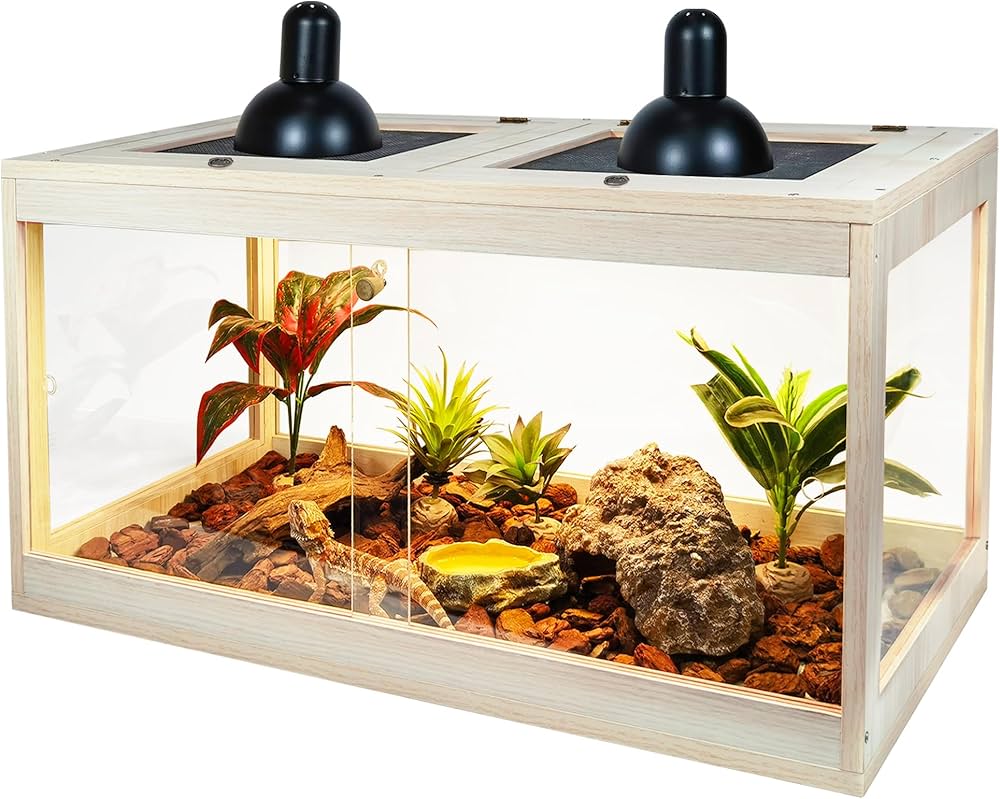Best Habitats for Different Hamster Types
Choosing the right habitat for your hamster is crucial for their health and happiness. Different types of hamsters have varying needs, which must be addressed through their habitats. In this article, we’ll explore the best habitats for common hamster types, including Syrian, Dwarf, and Roborovski hamsters. We’ll discuss cage sizes, materials, and essential features that will help create a safe and enriching environment for your furry friends. Let’s dive in!
Syrian Hamster Habitats
Syrian hamsters, also known as golden hamsters, are the largest and most popular species. They require a spacious habitat to accommodate their active nature. The ideal habitat for a Syrian hamster should be at least 24 inches long and 12 inches wide. Additionally, it should be deep enough to allow for bedding, which is essential for burrowing activities that mimic their natural instincts.
Cage Details and Features
The best cages for Syrian hamsters are usually large plastic or wire cages with a solid floor. It’s essential to avoid cages with wire bottoms, as they can harm the hamster’s paws. Providing multiple levels in the cage can give your hamster added exploration space. Consider adding platforms, tunnels, and hammocks to keep them entertained. It’s also wise to ensure proper ventilation while keeping the habitat escape-proof.

Essential Accessories
Every Syrian hamster habitat should include essential accessories to promote their well-being. A spacious wheel that is at least 8 inches in diameter is necessary for exercise, and add a sturdy, chew-proof hideout for rest. Ensure that you provide a nesting box filled with soft bedding material, like shredded paper or aspen shavings, for warmth and comfort. Include chew toys to satisfy their natural urge to gnaw and prevent boredom.
Dwarf Hamster Habitats
Dwarf hamsters, including Campbell’s, Winter White, and Roborovski varieties, are smaller in size and generally require slightly less space compared to Syrian hamsters. That said, their habitats should still be spacious and stimulating to support their lively nature.
Cage Size Recommendations
The recommended minimum cage size for a dwarf hamster is around 18 inches long and 12 inches wide. Providing multi-level cages can be beneficial, adding vertical space for climbing and exploring. Unlike Syrians, dwarf hamsters can often live together in pairs or small groups, provided they are introduced properly and are of the same gender. It’s essential to monitor for any signs of aggression, as some can be territorial.

Creating Enrichment Opportunities
In a dwarf hamster habitat, consider adding tunnels and small climbing toys. These features encourage natural behaviors and add interest to their living environment. A multi-chamber hideaway is also an excellent addition to promote stress relief and provide a sense of security. Dwarf hamsters enjoy chewing, so be sure to include suitable chew toys while ensuring the bedding is safe and absorbent.
Roborovski Hamster Habitats
Roborovski hamsters are the smallest of the hamster species and are known for their speed and playful nature. Despite their size, they still need adequate space to thrive. A suitable habitat should mirror their energetic personality while maintaining their safety.
Cage Requirements and Setup
The ideal habitat for a Roborovski hamster generally is a minimum of 24 inches long and 12 inches wide, similar to Syrian hamsters. However, due to their activity level, providing a larger space is recommended. Ensure the cage has a secure top to keep your furry little escape artists safe.
Activities and Toys
Roborovski hamsters are highly social and require ample stimulation. Incorporating multiple small tunnels and bridges allows for creative play. They also enjoy exercise wheels; it’s important to pick a silent wheel to avoid nighttime disturbances! It’s crucial to provide hiding spots and toys, as these elements contribute to a healthy mental state.

Key Takeaways
- Syrian hamsters need larger habitats with lots of enrichment.
- Dwarf hamsters require adequate space and can live together when properly introduced.
- Roborovski hamsters thrive in spacious, secure habitats full of stimulation.
- All types of hamsters benefit from hiding spaces, exercise wheels, and chew toys.
FAQ
1. What size habitat do hamsters need?
Hamsters require different habitat sizes depending on their species. Syrian hamsters need a minimum of 24 inches long, while dwarf hamsters only require about 18 inches long. Roborovski hamsters also do well in a 24-inch long habitat. Always aim to provide as much space as possible for your hamsters to thrive.
2. Can different types of hamsters live together in one habitat?
Generally, hamsters should not be housed together unless they are from the same species and are of the same gender. Syrian hamsters are solitary by nature and can be aggressive towards others, while dwarf hamsters may live together, given proper introductions. Always monitor for signs of stress or aggression.
3. What materials should I avoid in hamster habitats?
Avoid habitats with wire bottoms, as they can injure a hamster’s paws. Additionally, steer clear of wood shavings containing cedar or pine, which can be harmful. Opt for using aspen shavings or paper-based bedding for safety and comfort.
4. How often should I clean my hamster’s habitat?
Hamster habitats should be cleaned regularly, ideally once a week. Remove soiled bedding daily to maintain hygiene and check water bottles for cleanliness. A full clean will entail replacing all bedding and washing cage accessories to prevent any buildup of bacteria.
5. What should I include in my hamster’s habitat for enrichment?
Essential items for hamster enrichment include chew toys, tunnels, climbing structures, and exercise wheels. Add nesting materials for comfort and hiding spots to provide security. Rotate toys regularly to keep things interesting!
